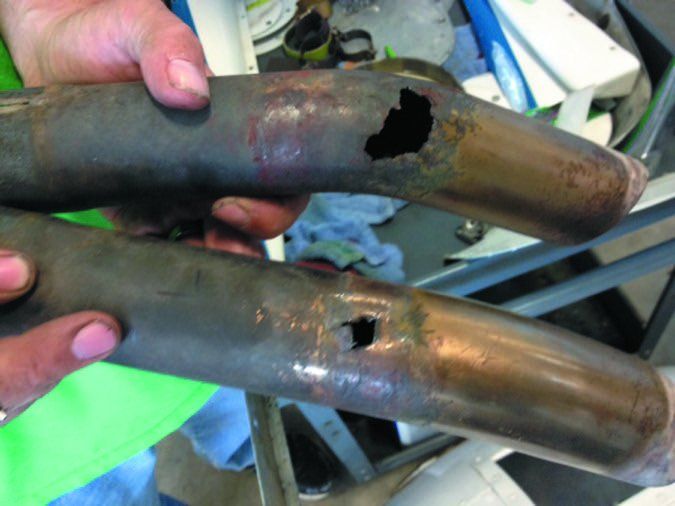As aircraft owners and pilots, we seem to pay far more attention to the middle portion of our powerplants-where reciprocation takes place-than to the area where the products of that reciprocation exit. It seems to be worthy of only a passing glance on preflight with, at best, a tug on the exhaust pipe to see if it’s still more or less attached.
The discharge portion of a powerplant has a pretty nasty job and lives in an environment that may we’ll be the definition of harsh. I think the FAA’s description in its Airframe and Powerplant Mechanics Powerplant Handbook understates things: “. . . a scavenging system that collects and disposes of the high-temperature, noxious gasses as they are discharged by the engine.” The reality is that those pipes bolted onto the engine eat flame, endure corrosive gasses that attack their very structure amidst intense vibration and are charged with safely channeling all of that heat and excitement to a point outside of the aircraft where they can do no harm to the trusting occupants of the cabin.
Because of the nature of the exhaust-world beast, the components of the system are going to wear out. As owners and operators, our concern is to detect the degree of wear before it becomes dangerous and take appropriate action.
Dangerous is any condition that allows products of combustion-the hot stuff containing gases that, when inhaled, will incapacitate or kill humans-to leave the exhaust system anywhere but at the end of the tailpipe.
I’ll outline ways that you and your maintenance technician can identify exhaust system wear before it becomes dangerous and what your options are when the system tells you that it’s reached the end of its useful life.
How Long?
Scott Utz, principal of Arapahoe Aero on Denver’s Centennial Airport, said that he does not expect an exhaust system to last to engine TBO, especially on a turbocharged engine. In addition, how a pilot operates the engine affects the life of the exhaust system-the more heat, the faster the wear, another good argument for running the engine lean of peak if possible.
Exhaust systems are made of either stainless steel or the nickel-chromium alloy Inconel. The systems wear from the inside out. Unfortunately, there is not an easy or economical way to measure component thickness in your local shop. As a result, inspecting for condition means there is usually nothing to be found until wear has gotten severe enough that the component has failed, and must either be overhauled or replaced.
Mike Busch, proprietor of Savvy Aircraft Maintenance Management, which manages several hundred piston-engine airplanes, said that his company most often sees exhaust systems initially develop problems on the outside radius of bends in the system. That was echoed by Darryl Johnson, a maintenance tech at Northern Air in Bonners Ferry, Idaho, who also said that an owner who is looking over his or her airplane should look for cracks near bends as we’ll as welds (a weld often weakens the metal adjacent to it), bulges in the exhaust pipes and for discoloration of the metal, particularly the colors green, blue or orange.
Not surprisingly, normal wear causes the components to become thinner so normal vibration will eventually cause the metal to crack, bulge or blow out. If an internal component breaks off, there is a chance it can lodge where it restricts exhaust gas flow. That increases back pressure on the engine, so the cylinders are less able to scavenge exhaust gases, which reduces power output. The power loss can be so great that the aircraft can’t hold altitude or the engine simply quits.
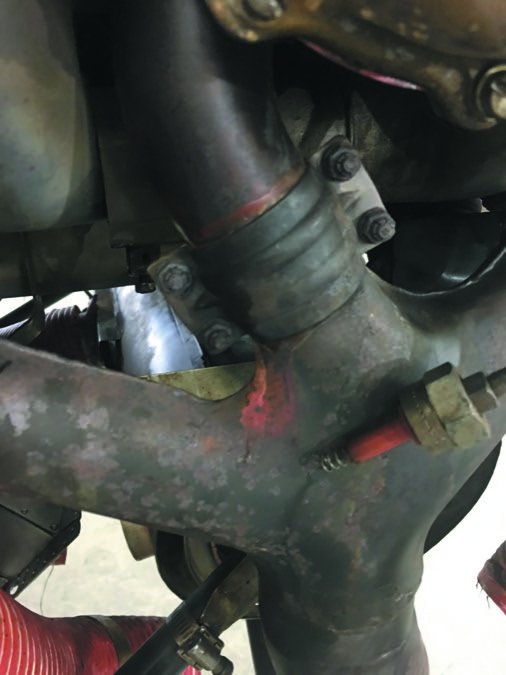
David Parker, proprietor of Northern Air told me that a part of every annual and 100-hour inspection his company does includes pressurizing the exhaust system of the airplane with a vacuum cleaner and swabbing the components with soapy water to look for evidence of leaks. It takes maybe 15 minutes and is likely to expose cracks that get overlooked during visual inspection and tapping components with a punch. I came away from the research I did for this article strongly of the opinion that a vacuum cleaner and soapy water exam of the exhaust system should be a part of every annual and 100-hour inspection.
If you see signs of discoloration, cracking or bulging of the exhaust system during your preflight or if your maintenance technician calls you up and tells you there’s an issue with your exhaust system, every source I’ve found says that you’ve got a safety of flight issue that needs to be repaired before the next flight.
Now What?
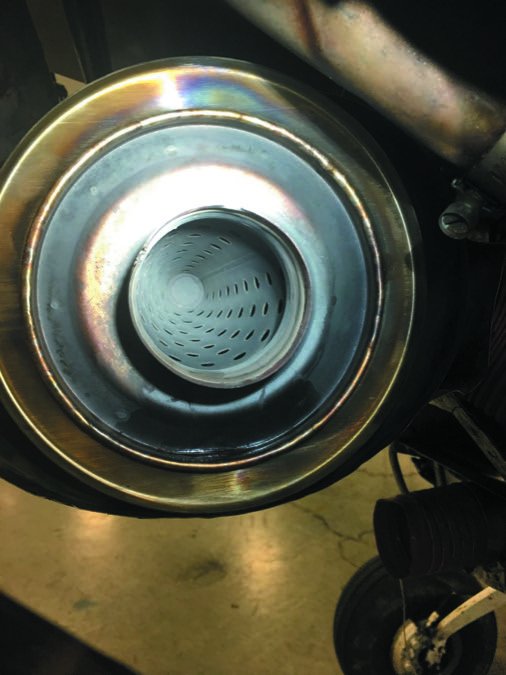
It’s happened. You’ve got a crack, bulge or blowout somewhere in your exhaust system. What is your next step?
A field repair by welding is possible. In my conversations with A&Ps in preparing this article, I found that few were willing to weld exhaust systems. The reasons included varying degrees of difficulty; that welding may only briefly delay the inevitable; that welding usually reduces the strength of the adjacent metal and may cause it to crack; and that there are very good specialized shops that have the equipment to evaluate exhaust system components and make a more informed decision regarding repair, overhaul or replace. None of the mechanics I spoke with was willing to make weld repairs on a turbocharged engine’s exhaust system. They also pointed out that such repairs are prohibited on a number of turbocharged engine exhaust systems-notably 300- and 400-series Cessnas, with a history of catastrophic accidents traced to weld repairs on exhaust systems.
Most of the technicians I spoke with were willing to replace individual exhaust system components with new or overhauled parts but said that there are times that there can be challenges with alignment, which can cause other parts to crack.
A high percentage of the shops I spoke with said that when they get into an exhaust system that shows signs of distress their practice is to pull it and send it to a specialized shop asking that it “evaluate and advise.” The big dogs in the field are Knisley Welding Inc., Aerospace Welding Minneapolis (AWI), Heliarc Welding Service Inc. (turbocharged Cessnas) and Acorn Welding (Canada). Not a single tech we spoke with had a negative comment about any of the specialized shops and a few expressed a high level of satisfaction with the speed of service they’d experienced. However, all said to call the shop before shipping to make sure the shop has needed parts on hand if repairs prove to be impossible.
The specialty shops can do repairs and generally also offer new and overhauled components and systems. “Overhauled” means that some portion of the original component was reused. In some cases the specialty shops have received FAA approval for modifications to original equipment systems that increase expected life or reduce heat on engine accessories by rerouting the system.
System costs vary based on number of cylinders, complexity of the system and whether you buy new or overhauled. In discussions with various shops, I heard prices starting as low as $2000 and ranging up to $6000.
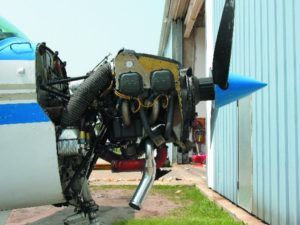
Power Flow Systems
Speed mod guru Robin Thomas started Power Flow Systems (www.powerflowsystems.com) with the intent of using racing technology to design “tuned” exhaust systems for aircraft. The concept involves reducing pressure at each cylinder’s exhaust port just before it closes to maximize scavenging efficiency and allow the largest slug of a cool fuel/air mixture to then enter and be combusted.
More fuel and air per cycle means more power. To accomplish this, Power Flow customizes the exhaust tube for each cylinder so its length-from cylinder to the collector where the tubes join-causes the low pressure traveling down the tube behind an “exhaust puff” to reach the collector in time to suck out the exhaust from the next cylinder to fire. The installation on a Cessna 172 is shown in the top photo.
Depending on the type of airplane, Power Flow claims measurable power increases with its exhaust system-23.8 HP on a 160-HP Lycoming O-320-A1A engine in a Cessna 172. The power increase translates into an increased rate of climb and cruise speed. It also means greater fuel consumption-as is expected with more power. However, as Power Flow points out, if the pilot reduces power to cruise at the same speed as before the mod, fuel consumption decreases. Depending on the installation, the fuel saving is from one to three GPH. However, none of the owners I spoke with pulled the power back; they took advantage of the speed increase.
Power Flow offers a 60-day trial period for its system-if you don’t like it in that time, return for a full refund. David Parker, proprietor of Northern Air in Bonners Ferry, Idaho, told me that he has never had a customer decide to remove a Power Flow exhaust his company installed and said that he observed the systems to last at least to engine TBO, much longer than factory systems. Beyond 60 days, the warranty is one year or 500 hours of operation.
Full disclosure-I instruct at Northern Air. It has two 160-HP Cessna 172s. One has a Power Flow exhaust system. It has a noticeably better rate of climb than the stock 172 and is the one the FBO usually uses for its mountain flying checkouts due to its increased performance.
Power Flow exhausts are available for a wide variety of four-cylinder engine singles as we’ll as the IO-530 powered Bonanzas.
Prices for the systems vary by airplane and options-and there are discounts if you are willing to wait a few weeks or months for your system-but figure on $4000 to $5500 and five to 10 hours for the installation.
Leading Edge Exhaust Systems
In 1995, after 10 years of running a company that did exhaust system repairs, the late Dane Wagner opened Leading Edge Exhaust Systems (LEES), in Anchorage, Alaska, to build aircraft exhaust systems that were of higher quality and more robust than OEM equipment and that would allow the engine to develop more power. Having experience with the needs of the Alaska bush operators, he targeted their airplanes of choice, the Cessna 180, 182, 185 and 200 series and the Piper PA-12, 18 and 20/22. The system installed on a Cessna 182 is shown in the bottom photo.
Leading Edge stated that customers can expect to see a horsepower gain of approximately 10 percent using its pipes with a reduced brake specific fuel consumption (BSFC) and increased torque. It offered the best warranty I have ever seen for exhaust systems. My condolences to the Wagner family. For aircraft owners looking for increased performance and a more robust exhaust system, it is my hope that LEES products will again be available.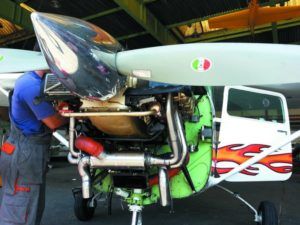
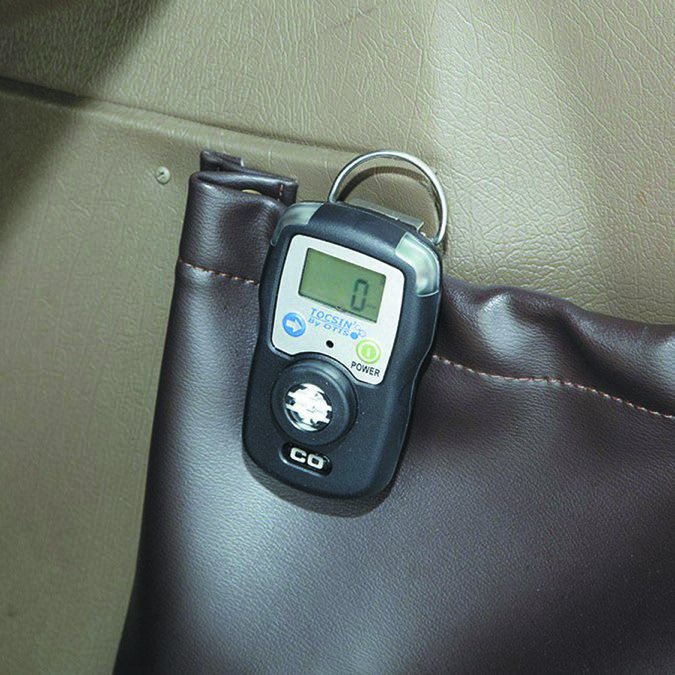
uts your hemoglobin out of commission and then suffocates you-it deprives your body of oxygen. The hyper-strong COHb bond means that even tiny concentrations of CO can kill you through slow poisoning during a flight of just a few hours.
The oxygen-deprivation function of CO poisoning makes it deadly because it attacks the most important parts of your body first-brain, nervous system, heart and lungs.
That’s why a number of CO-caused aircraft crashes are preceded by witness statements or radar tracks that describe an airplane wandering aimlessly through the sky or a pilot who does not respond to ATC calls to point him at an airport or instrument approach.
To make matters worse, the deadly effects of CO exposure in an airplane are exacerbated by altitude.
I’ve done the research to prepare the accident section of the Used Aircraft Guide in every issue of Aviation Consumer for the last 10 years. The accident reports I’ve read have caused me to form the opinion that the risk of an accident due to CO
poisoning is higher than that of a midair collision. In addition to the fatal accidents where the postmortem exam of the pilot turns up CO poisoning, there are enough oddball loss of control accidents-especially on landing-where the pilot survives and is never tested for CO exposure to have caused me to form the opinion that those pilots were partially incapacitated by CO.
In 2017 the NTSB published a Safety Alert expressing its concern about pilot incapacitation due to CO and a recommendation that pilots should have a CO detector in their airplanes.
We pay good money for devices that will warn of a risk of a midair. Good-quality CO detectors cost less. Low levels are dangerous because the body doesn’t shed the toxin rapidly, so the effects multiply. The device has to have an effective warning system-a warning that doesn’t get your attention is worthless. You’ve got to know of a risk to act on it.
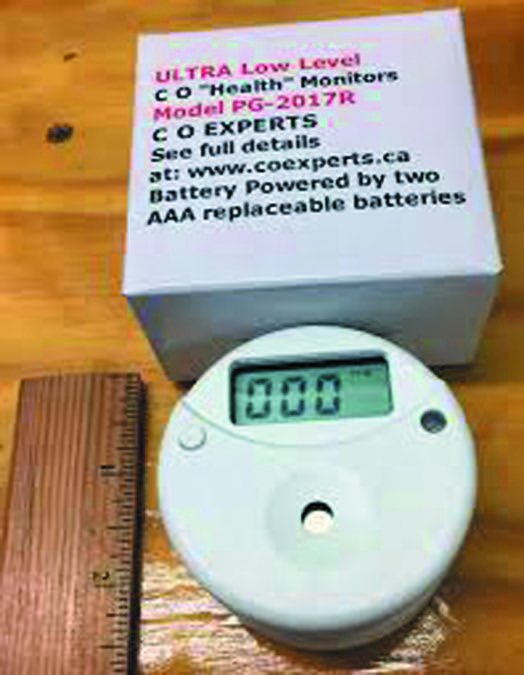
Aviation Consumer reviewed CO detectors in the October 2016 issue. One
thing that was noted is that household detectors do not alert at low levels of CO and most have a time delay before the alert triggers. That disqualifies them for aviation use.
I’ve flown with three of the detectors reviewed in the article and recommend all of them because they work well, have a loud alarm and detect very low levels of CO. Here’s a quick rundown:
The Tocsin OI-315 CO Monitor by Otis Instruments (top) is available for $169.95 at www.sportys.com. It alarms at 35 PPM, with a flashing LED light, 90 dB Piezo horn and the thing vibrates.
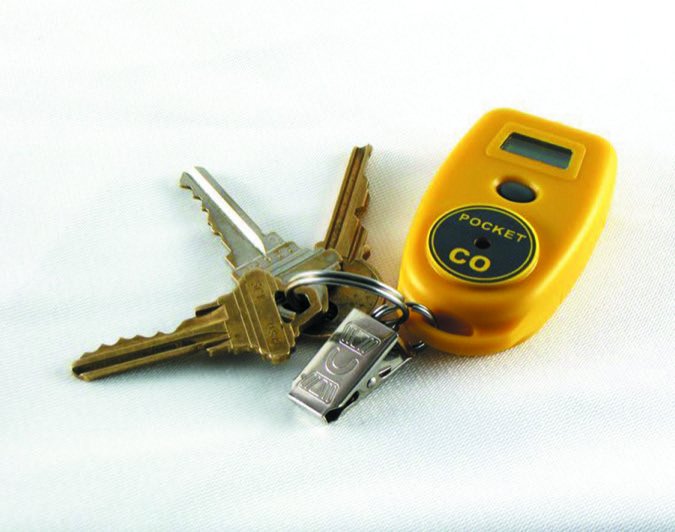
The CO Experts ULTRA (middle) is the most sophisticated of the portable units I’ve found. It’s available for $199 from www.aeromedix.com. The first alert is at 7 PPM. The type of alert changes as the concentration level rises. It has a memory feature that can be helpful to medical personnel to show the history of exposure.
The Pocket CO 300 (bottom) is priced at $131.95 from www.aircraftspruce.com. It is a keychain CO detector. It doesn’t alarm until 50 PPM-a little high, in my opinion-setting off an 82-dB warning, LED light and vibration with increasing frequency at thresholds of 125 and 400 PPM. It has a replaceable coin cell battery.
I suggest that you stay away from the chemical spot detectors. To start with, you have to have keep it in your panel scan to see if it is giving you a warning. Worse, each type has a life limit-but pilots seem to stick them on the panel and leave them forever. Beyond that, for the ones that turn “dark,” what is “dark”? How do you tell “dark” when you’re flying at night?
The risk is real. The prices are right.
Conclusion
Internal combustion engines have meant great things for aviation. However, the stuff that comes out of the exhaust can bring a flight to grief in a staggeringly short time if it is not managed appropriately.
Eyeballing the system during each preflight and careful examination-including pressurizing it and swabbing it with soapy water to check for leaks-during scheduled maintenance, and repairing or replacing worn components, are keys to keeping it healthy.

